Stable auroral red (SAR) arc emission observed over North America from space by the Dynamics Explorer 1 satellite. This image was filtered at 6300 angstroms. the characteristic emission of SAR arcs.
Click on image for full size
Image provided courtesy of L. Frank and J. Craven from the Dynamics Explorer 1
The SAR Arc
The aurora we are most familiar with is the polar aurora. This is what people are referring to when they speak of the northern or southern lights. But there are other less-known auroral activity, such as SAR arcs. The SAR arcs or Stable Auroral Red arcs have been viewed with interest since their discovery in 1956.
The reason that SAR arcs were discovered so late compared to poleward aurora is that the SAR arc emission occurs very rarely in the visible spectrum. So, optical instruments are required to register their presence and note the frequency with which they occur. SAR arcs are seen as relatively featureless, slowly changing bands of red light that can extend over the entire night sky. They can appear simlutaneously in both the northern and southern hemispheres.
SAR arcs occur on approximately 10-12% of nights throughout the solar cycle. The long-lived, soft, red glow of the SAR arcs most likely reflects the slow energy loss from ring current ions as they bounce back and forth along the Earth's magnetic field lines. Although the exact sequence of physical processes that are the energy source for the SAR arcs is still debated by scientists today, SAR arc emission does increase with increasing solar activity.
You might also be interested in:

AU stands for Astronomical Units. Distances in space are too large to measure in Earth standards like miles or kilometers. For distances too large to measue in AU, we use light years. A light year is the
...more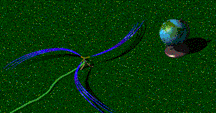
The solar wind is formed as the Sun's topmost layer blows off into space carrying with it magnetic fields still attached to the Sun. Gusts and disturbances form in the solar wind associated with violent
...more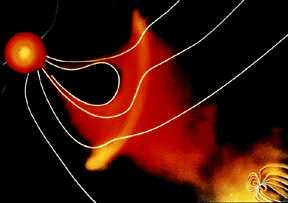
For a planet to be affected by a blob of material being ejected by the sun, the planet must be in the path of the blob, as shown in this picture. The Earth and its magnetosphere are shown in the bottom
...more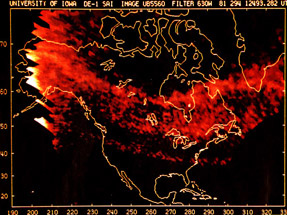
The aurora we are most familiar with is the polar aurora. This is what people are referring to when they speak of the northern or southern lights. But there are other less-known auroral activity, such
...more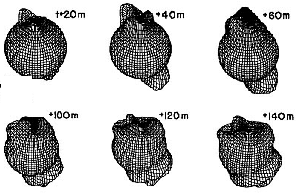
This figure shows the effect of the aurora on the atmosphere. When FAC's enter the atmosphere and create the aurora, they warm the atmosphere impulsively. This impulse travels throughout the atmosphere
...more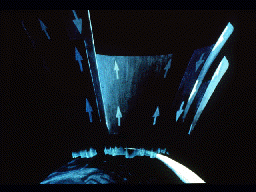
This picture illustrates the streaming of particles into and out of the auroral zone, as Field-aligned currents (FAC's) short-circuit through the ionosphere. Some of the particles entering the auroral
...more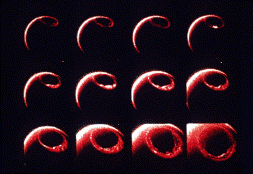
This figure shows a series of images of the auroral oval as it expands over the course of about an hour in response to a geomagnetic storm. This is an animation of the expanding auroral oval.
...more














